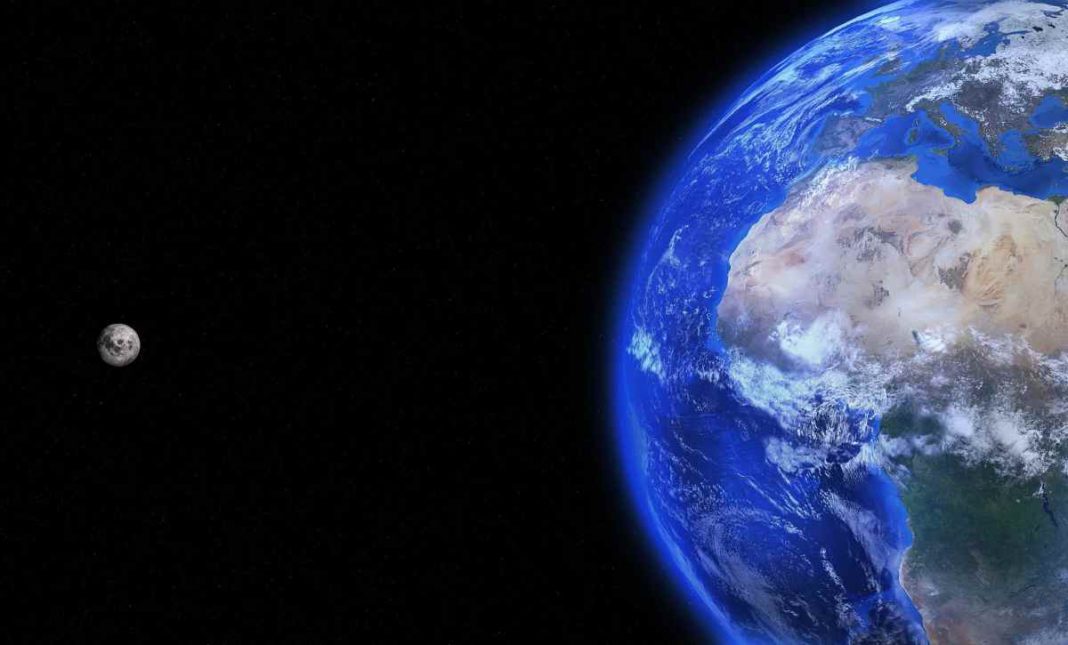UNITED STATES: While researching the ancient history of our planet, scientists have made a groundbreaking discovery that sheds light on Earth’s day and its relationship with the Moon and the Sun. While Earth’s day has been gradually lengthening due to the Moon’s influence, there was a peculiar interruption in this process that occurred billions of years ago.
In this comprehensive article, we will explore the research findings that reveal a remarkable tidal standoff between the Sun and the Moon, ultimately determining the Earth’s rotational rate and the length of its day.
The astonishing pause in Earth’s day lengthening
A team of astrophysicists recently revealed that Earth’s day experienced a one-billion-year interruption in its lengthening cycle. This unique phenomenon occurred between two billion and 600 million years ago when the gravitational force from the Moon encountered an opposing influence originating from the Sun.
The Sun’s atmospheric tide actively worked against the lunar effect, ensuring that Earth’s rotational speed remained constant and the day length was fixed at 19.5 hours.
Astonishingly, had this interruption not taken place, Earth’s day, which currently spans 24 hours, would have extended to an impressive duration of 60 hours.
The role of atmospheric temperature and Earth’s rotational rate
The team of researchers behind this groundbreaking study has successfully demonstrated that the standoff between the Sun and the Moon was a result of two crucial factors: Earth’s atmospheric temperature and its rotational rate.
By examining geological evidence and employing advanced atmospheric research tools, they have uncovered the intricate interplay between these elements, leading to the unique interruption in Earth’s day-lengthening process.
The Moon’s decelerating force on Earth
One of the key influences on Earth’s day lengthening is the Moon. When the Moon was initially formed, Earth’s days lasted a mere 10 hours. However, the Moon’s gravitational force gradually decelerated the planet’s rotation on its axis, contributing to the lengthening of days to the current 24-hour period.
Remarkably, the Moon continues to extend the day, albeit at a much slower pace of approximately 1.7 milliseconds per century.
Understanding the gravitational interplay
Gravity plays a significant role in the Moon’s influence on Earth. As gravity exerts its pull on Earth’s oceans, tidal bulges form on opposite sides of the planet, giving rise to the phenomenon of high and low tides.
The Earth’s rotation is slowed down by the Moon’s gravitational attraction on these bulges as well as friction caused by the tides and the ocean floor.
The Sun’s role in the tidal standoff
While the Moon exerts a decelerating force on Earth, it is essential to recognize the role of the Sun in the fascinating tidal standoff. Sunlight generates an atmospheric tide, leading to similar bulges as observed in the ocean tides.
However, the Sun’s gravity interacts differently with these atmospheric bulges, creating a torque on Earth. Unlike the Moon, which decelerates Earth’s rotation, the Sun’s influence accelerates it.
Conclusion
In conclusion, the research conducted by the team of astrophysicists has unravelled a captivating piece of Earth’s ancient history—the extraordinary tidal standoff between the Sun and the Moon.
This remarkable revelation has shed light on the interruption in Earth’s day lengthening, offering insights into the interplay between atmospheric temperature, Earth’s rotational rate, and the gravitational forces exerted by the Moon and the Sun.
Also Read: NASA Perseverance Rover Uncovers Potential Building Blocks of Life on Mars



